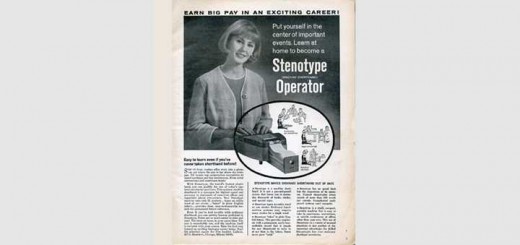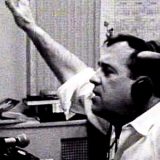How Programmatic Advertising Can Monetize Your Podcast
 In part 1 and part 2 of this series of posts I wrote about why and how some of the engagement principles used by network radio shows in the 1930s and 40s might be applied to podcasting. The power of engaging an audience through a show’s talent, and leveraging that engagement to move the audience into action, is not a question in my mind. Even without hard statistics, I found enough anecdotal evidence to convince me that this is an approach podcasters should seriously consider. Working directly with a sponsor, as partners, works to everyone’s benefit.
In part 1 and part 2 of this series of posts I wrote about why and how some of the engagement principles used by network radio shows in the 1930s and 40s might be applied to podcasting. The power of engaging an audience through a show’s talent, and leveraging that engagement to move the audience into action, is not a question in my mind. Even without hard statistics, I found enough anecdotal evidence to convince me that this is an approach podcasters should seriously consider. Working directly with a sponsor, as partners, works to everyone’s benefit.
The radio trade blogs and magazines are no longer ablaze with that form of advertising. Today, the bright, shiny object at the core of many conversations is programmatic advertising.
Since radio concepts eventually find their way into podcasting, I wanted to what programmatic advertising would eventually bring to our industry. I contacted marketing and advertising entrepreneur Robert Brill, and in a conversation that ranged from advertising to Tom Leykis’ media empire to Brill’s latest venture, a company that builds Twitter followers for small businesses, he convinced me that programmatic advertising is both exciting and scary. In this post, we’ll look at the exciting part, starting with what programmatic advertising is all about.
Inventory
At any moment, as Brill described it, there are millions of website pages being loaded around the world. On many of those pages, the site owners (publishers) have made space for ads. This space is what advertisers call inventory,
The Overwhelming Challenge of Scale
At the same time, there are thousands of advertisers who would buy some or all of that inventory, if the price were right. But these advertisers face a devastating problem of scale. No human, or even teams of humans, can keep up with all the inventory, let along match it with advertisers willing to buy it.
Programmatic Advertising Cuts Scale Down to Size
Programmatic advertising, which Brill likes to compare to the stock market, uses computers to match buyers and sellers, or in this case, advertisers and publishers. The match up is based on data analysis such as
- the profile the advertiser wants to reach, say women between 18 and 24 who are looking for a new car;
- anonymous data about the person downloading a particular web page, data distilled from digital footprints on sites from MasterCard to Equifax to specialized buying and service sites (think Travelocity);
- what competing advertisers are willing to pay for an ad on a specific webpage.
More than just a meeting ground for advertisers and publishers, programmatic advertising matches inventory, prices and user profile to serve a particular ad in the milliseconds between the time a page is scheduled for a download and the time its content is delivered.
Great for Advertisers
Beyond finding just the right place for an advertiser’s ads, programmatic advertising eliminates the need for an advertiser to make individual ad purchases from—and conduct individual negotiations with—millions of website owners, and then write millions of checks to pay for the advertising space the it purchased.
Great for Website Owners
For a website owner the benefits include not having to negotiate with hundreds of potential sponsors—most of whom won’t return your email unless you have a jillion downloads a month anyway—and not having to keep track of how much space they sold to whom and for how much so they can bill advertisers (and then collect the money, which is a small industry in itself.)
Coming Soon, Great for Podcasters
As a podcaster, programmatic advertising is a way to wring extra dollars from your website. But if you’re like me, you’re not in the website business, You’re a modern-day radio pioneer. So my next question to Brill was how can we use programmatic advertising to wring money from our podcasts? To answer this question, Brill took a peek into his crystal ball (or maybe it was the data he’d compiled while preparing for our conversation).
“It’s a little more difficult, but not impossible,” Brill said. While the technology is still evolving, Brill found several companies that are placing ads in podcasts. Midroll was one he mentioned, and it offers the ability to insert ads before and within an episode, I assume as it downloads. There’s a calculator on Midroll’s website that estimates your yearly revenue as a function of your downloads per month, minutes available for commercials and episodes per year. With 25,000 downloads a month you can earn some respectable dollars. Even with small audiences you can earn enough to cover your expenses and perhaps expand your podcast’s scope.
Small Size, Big Influence
What Brill pointed out is that the small podcaster is an important influencer in his or her community of listeners. While advertisers could not take advantage of this influence before, programmatic advertising aggregates small but influential podcasters into a single advertising opportunity that is easy for advertisers to buy.
Brill believes that programmatic advertising will be a dominant method (if not the leading method) in the way we monetize our podcasts. “You guys are on the cutting edge of this democratized media landscape,” Brill said, by way of explaining his position.
Passive monthly revenue that can reach into six figures a year. That’s the good news about programmatic advertising. I’ll discuss why the good news comes with some bad news in part 4.
In the meantime, please share your thoughts with other podcasters looking to monetize their podcasts.
 Robert operates Brill Media Company, which provides programmatic media and influencer marketing services to brands, publishers and ad-tech companies. He is the Founder of Audience Boom, which helps local businesses develop presences on Twitter and Instagram. You can find him at brillmediaconsulting.com, brillmedia.co and audienceboom.com.
Robert operates Brill Media Company, which provides programmatic media and influencer marketing services to brands, publishers and ad-tech companies. He is the Founder of Audience Boom, which helps local businesses develop presences on Twitter and Instagram. You can find him at brillmediaconsulting.com, brillmedia.co and audienceboom.com.








